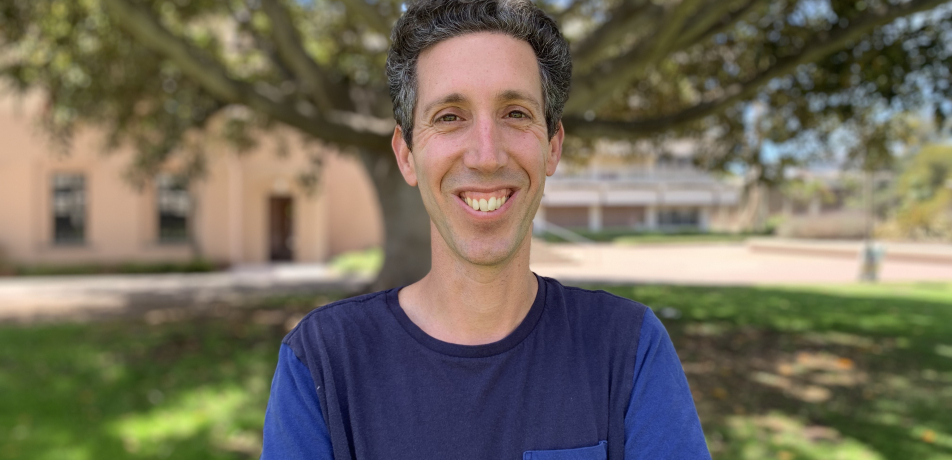Understanding the self-organized embryo
A physicist by training, Dr. Eyal Karzbrun is now exploring the physical forces that guide organ formation
New scientists

Human organs, from the brain to the lungs, are sculpted into beautifully complex shapes from tens of thousands of individual cells over the course of embryonic development. A fundamental question in systems biology concerns how the physical shape of an organ emerges from the collective activity of its constituent parts, as such intricately orchestrated self-organization doesn’t exist outside of biology.
A physicist by training, Dr. Eyal Karzbrun is fascinated by the tissue mechanics and fluid dynamics underlying embryonic development—and in particular, the mechanics of neural tube formation in health and disease. Although most scientists who study organ formation have historically focused on the genes that regulate such processes, Dr. Karzbrun focuses instead on the physical forces and material properties that guide the embryonic genesis of organs.
“As microscopy and stem-cell culture techniques have become more advanced, it is now possible to address biological questions with the quantitative rigor necessary to build a physical understanding of organ formation,” says Dr. Karzbrun, who recently joined the Institute’s Department of Molecular Genetics.
‘Growing up’ at Weizmann As he puts it, Dr. Karzbrun “grew up,” scientifically speaking, at the Weizmann Institute of Science, having studied under the guidance of both physicists and chemists. He conducted his MSc in the lab of Prof. Ofer Aharony in the Department of High-Energy Physics (now the Department of Particle Physics and Astrophysics), and his PhD in the lab of Prof. Roy Bar- Ziv in the Department of Materials and Interfaces (now the Department of Molecular Chemistry and Materials Science).
It was during his postdoctoral fellowships—first in Prof. Orly Reiner’s lab in the Department of Molecular Genetics at the Weizmann Institute, and then under Profs. Boris Shraiman and Sebastian Streichan at the Kavli Institute for Theoretical Physics at the University of California, Santa Barbara—that Dr. Karzbrun began to develop human stem-cell models capable of reconstructing embryonic phenomena in a petri dish. That is, he uses microfabrication techniques to generate 3D stem-cell systems, or “organoids,” that can reproducibly undergo complex shape changes in response to minimal biochemical cues. Organoid reproducibility had been a major challenge in the field; working with such micro-sized, tightly controlled parameters has enabled Dr. Karzbrun to cross that hurdle and advance this entire area of research. He is also the co-inventor on a patent application related to a device for studying gene expression, and on a patent application related to a method for studying cellular differentiation.
Phenomenal interplay: By using 3D stem-cell culture systems, he can watch neural tube formation right there in the lab—with an assist from nanofabrication, “clean room” facilities. The neural tube is the first step in the formation of the nervous system. His goal is to understand how the interplay between biological regulation and mechanical phenomena determines organ shape— starting with the neural tube and brain, with plans to branch out to other organ systems—and how dysregulation leads to human birth defects, such as spina bifida and anencephaly. “The potential implications for human health are the cherry on top,” says Dr. Karzbrun. He was impressed by how the Weizmann Institute takes care of its scientists—providing them with the resources and environment they need to focus on their science and succeed. He is also looking forward to the multidisciplinary spirit of the Weizmann campus— which may come as no surprise for a scientist working at the crossroads of theoretical physics, materials science, and developmental biology.
Dr. Karzbrun is married to Dr. Alexandra Tayar, whom he met when they were both doctoral students in the Bar-Ziv lab. His wife is also returning to the Weizmann Institute as a new scientist, joining the Department of Chemical and Biological Physics. They have a son.
Education and select awards:
• BSc, Hebrew University of Jerusalem (2006)
• MSc (2009), PhD (2014), and Postdoc (2014- 2018), Weizmann Institute of Science
• Postdoc, University of California, Santa Barbara (2018-2022)
• Azrieli Foundation PhD Fellowship (2011- 2014); Shimon Reich Memorial Prize (2014); Hugh and Sandra Stone Fellowship (2016- 2017); Koshland Prize (2017); Human Frontier Science Program Long-Term Postdoctoral Fellowship (2018-2021); UCSB SAGE Center for the Study of the Mind Junior Fellowship (2019-2021)